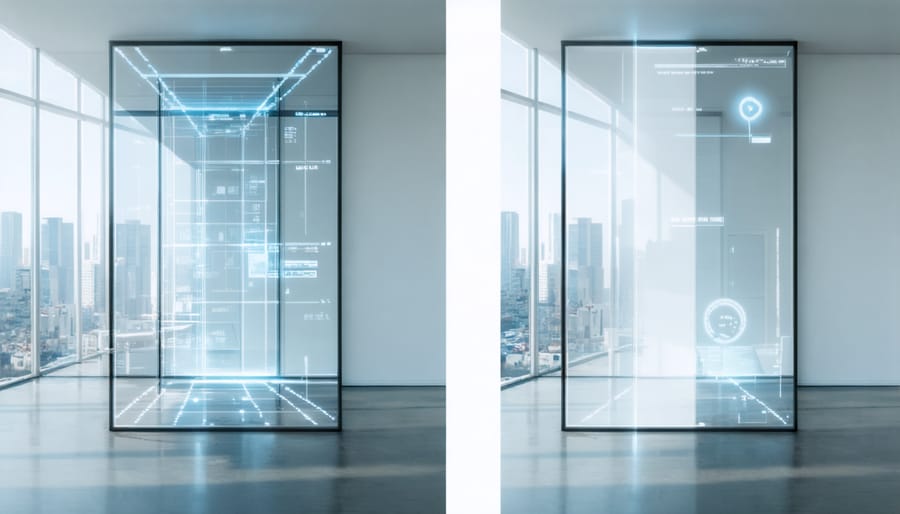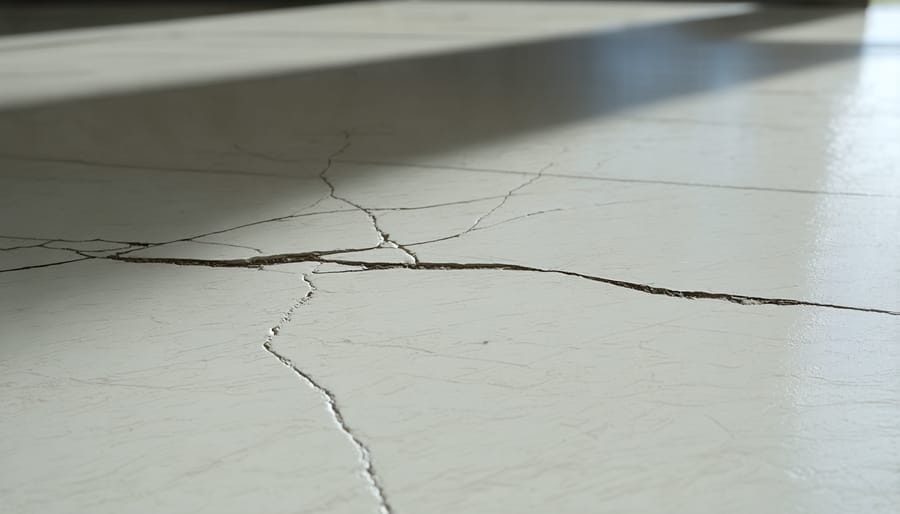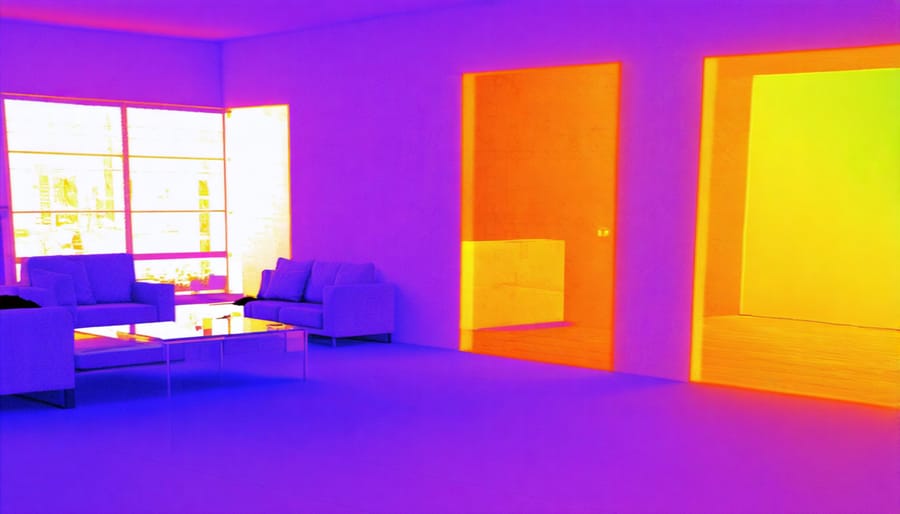Transform your living space with groundbreaking materials that blend cutting-edge technology with timeless design. Today’s innovative renovation solutions are revolutionizing how we think about home improvements, offering unprecedented durability, sustainability, and aesthetic appeal.
From self-healing concrete that repairs its own cracks to thermochromic surfaces that change color with temperature, modern materials are pushing the boundaries of what’s possible in home design. These advancements aren’t just about visual appeal – they’re reshaping how our homes perform, with smart materials that regulate temperature, purify air, and reduce energy consumption.
Imagine walls that absorb excess moisture to prevent mold, countertops that kill bacteria on contact, and windows that automatically tint based on sunlight intensity. These aren’t concepts from a distant future – they’re available now, transforming everyday homes into sophisticated, efficient living spaces that adapt to our needs.
Whether you’re planning a complete renovation or looking to upgrade specific areas, understanding these innovative materials can help you make informed decisions that balance functionality, sustainability, and style. Let’s explore how these revolutionary materials can enhance your home while potentially reducing long-term maintenance costs and environmental impact.
Smart Glass: Beyond Traditional Windows

Privacy at the Touch of a Button
Remember when privacy meant pulling curtains or blinds? Today’s smart building technology offers a more elegant solution: switchable privacy glass. This innovative material transforms from transparent to opaque with just the press of a button, giving you instant control over your privacy and natural light.
The magic happens through a special layer sandwiched between two panes of glass. This layer contains liquid crystal molecules that, when electricity flows through them, align to create a clear view. Switch off the power, and these molecules scatter randomly, creating a frosted effect that blocks visibility while still allowing light to pass through.
Think of your bathroom windows, conference rooms, or even that street-facing living room. No more fumbling with blinds or dealing with curtains that collect dust. Just tap a switch, and you’ve got instant privacy when you need it, and crystal-clear views when you don’t.
The best part? This technology works instantly and can be connected to your home automation system. You can even schedule privacy settings throughout the day or control them remotely from your smartphone. While the initial investment is higher than traditional window treatments, the convenience, modern aesthetic, and reduced maintenance make it an increasingly popular choice for today’s homes.
Energy Efficiency Benefits
When it comes to innovative materials in home improvement, the energy efficiency benefits are truly game-changing for both your wallet and the environment. Modern materials like aerogel insulation and smart glass windows can reduce your energy consumption by up to 30%, leading to significant savings on your monthly utility bills.
These advanced materials work by creating better thermal barriers, preventing heat loss in winter and keeping your home cooler in summer. For example, phase-change materials in walls can absorb excess heat during the day and release it at night, naturally regulating your home’s temperature without overtaxing your HVAC system.
The environmental impact is equally impressive. By reducing your home’s energy consumption, you’re directly lowering your carbon footprint. A typical home upgraded with energy-efficient materials can prevent up to 2.5 tons of carbon dioxide emissions annually – that’s equivalent to planting about 40 trees!
Beyond the immediate benefits, these materials often qualify for energy tax credits and rebates, making the initial investment more manageable. Plus, many energy-efficient materials are designed to last longer than traditional options, reducing replacement costs and construction waste over time.
The best part? You’ll notice the difference in comfort right away, with more consistent temperatures throughout your home and fewer drafts. It’s a win-win situation where your comfort, savings, and environmental consciousness all align perfectly.
Sustainable Materials Making Waves

Recycled Composites
Recycled composites are revolutionizing home design, offering eco-friendly alternatives that don’t compromise on style or durability. These innovative materials combine recycled plastics, wood fibers, and other reclaimed materials to create stunning surfaces and building components that are both sustainable and practical.
One of the most popular applications is composite decking, which blends recycled plastic with wood waste to create boards that resist weathering, require minimal maintenance, and last decades longer than traditional wood. These materials come in a variety of textures and colors, allowing homeowners to achieve the look of natural wood without contributing to deforestation.
In kitchen and bathroom design, recycled glass composites are making waves as countertop alternatives. These surfaces incorporate post-consumer glass fragments suspended in eco-friendly resins, creating unique, sparkly finishes that catch the light while telling a sustainability story. Each piece is unique, featuring a mix of colors and patterns that can’t be replicated.
Wall panels and tiles made from recycled materials are another exciting development. Manufacturers are transforming everything from plastic bottles to agricultural waste into attractive wall coverings that offer excellent acoustic properties and thermal insulation. These panels often feature interesting textures and patterns that add visual interest while serving a practical purpose.
For flooring solutions, recycled rubber composites provide durable, comfortable surfaces perfect for home gyms, playrooms, and high-traffic areas. These materials offer excellent shock absorption and noise reduction while giving new life to used tires and other rubber products that would otherwise end up in landfills.
The best part? These recycled composites often come with warranties comparable to traditional materials, proving that sustainability doesn’t mean sacrificing quality or longevity.
Bio-Based Materials
Nature is inspiring a revolution in home building materials, offering sustainable alternatives that are both beautiful and environmentally responsible. These bio-based materials are changing how we think about construction while reducing our carbon footprint.
Mushroom-based materials are leading this green revolution. Created from mycelium (the root structure of mushrooms) combined with agricultural waste, these materials can be used for insulation and decorative panels. They’re naturally fire-resistant, incredibly durable, and completely biodegradable when their useful life ends.
Bamboo continues to gain popularity as a sustainable alternative to hardwood. This fast-growing grass reaches maturity in just 3-5 years, compared to decades for traditional timber. Modern processing techniques have made bamboo suitable for everything from flooring to structural elements, offering exceptional durability and a unique aesthetic appeal.
Hemp-based materials are another game-changer. Hempcrete, made from hemp hurds mixed with lime and water, creates strong, lightweight walls with excellent insulation properties. It’s naturally resistant to mold, pests, and fire while actively absorbing CO2 throughout its lifetime.
Cork is making a comeback in innovative ways. Beyond flooring, it’s now used for wall panels, furniture, and even exterior cladding. Its natural water resistance, thermal properties, and sound absorption make it perfect for modern homes.
Seaweed-based materials are emerging as promising alternatives for insulation and packaging. These marine-derived products offer excellent thermal performance while putting minimal strain on land resources.
When considering bio-based materials for your project, remember that while initial costs might be higher than traditional options, the long-term benefits often include reduced energy costs and minimal environmental impact. Many local builders are now specializing in these materials, making them increasingly accessible for home projects.
Self-Healing Surfaces

Kitchen and Bathroom Applications
Kitchens and bathrooms endure the most wear and tear in our homes, making them perfect candidates for innovative materials that combine durability with style. Smart surfaces that resist fingerprints and bacteria have become game-changers in these spaces, offering both practical benefits and peace of mind for busy households.
In kitchens, self-healing countertops are making waves, with surfaces that can repair minor scratches through heat activation. Nano-tech coatings on cabinets and appliances repel water, grease, and stains, dramatically reducing cleaning time. Meanwhile, antimicrobial copper alloys are finding their way into handles and fixtures, naturally fighting harmful bacteria.
Bathroom innovations focus on moisture management and hygiene. Hydrophobic tiles that shed water and prevent mold growth are revolutionizing shower areas. Smart mirrors with built-in heating elements prevent fogging while doubling as lighting sources. Non-porous solid surface materials are gaining popularity for vanities and shower walls, offering seamless, grout-free installations that are incredibly easy to maintain.
For both spaces, eco-friendly bamboo composites and recycled glass surfaces provide sustainable alternatives to traditional materials without compromising on style or durability. These materials not only stand up to daily use but also contribute to healthier indoor air quality by eliminating the need for harsh cleaning chemicals.
Remember to consider your lifestyle and maintenance preferences when selecting materials for these high-traffic areas. The initial investment in innovative materials often pays off through reduced maintenance costs and longer-lasting installations.
Maintenance and Longevity
While innovative materials can seem like a significant upfront investment, their long-term value often outweighs initial costs through reduced maintenance and extended lifespan. To help you maximize your investment, let’s break down the care requirements and cost benefits.
Most modern materials are designed with easy maintenance in mind. For example, engineered quartz countertops require only daily wiping with mild soap and water, saving both time and money on specialized cleaning products. Similarly, composite decking materials might cost more initially but eliminate the need for annual staining and sealing that wood requires.
To extend the life of your innovative materials:
– Clean surfaces regularly with appropriate products
– Address spills and stains immediately
– Perform seasonal inspections for damage
– Follow manufacturer maintenance schedules
– Keep warranty documentation handy
The cost-benefit analysis is compelling when you consider the bigger picture. Take smart glass windows: while they may cost 20-30% more than standard windows, they can reduce energy bills by up to 25% annually and typically last 15-20 years with minimal maintenance.
Remember that proper care isn’t just about preserving appearance—it’s about protecting your investment. Many innovative materials come with warranties of 10-25 years, but these often depend on following proper maintenance protocols. By implementing a regular care routine, you’ll ensure your materials maintain their performance and aesthetic appeal for years to come.
Temperature-Regulating Materials

Smart Walls and Flooring
Transform your living spaces with revolutionary smart walls and flooring that blend technology with everyday functionality. Interactive walls can now change colors with a tap on your smartphone, while pressure-sensitive flooring can track movement and automatically adjust lighting as you walk through your home.
In the kitchen, consider installing smart backsplashes that display recipes, weather updates, or your family calendar. These surfaces are easy to clean and can switch from functional displays to decorative patterns when not in use. For your home office, smart walls can transform into whiteboards or video conferencing backgrounds with built-in speakers and microphones.
Smart flooring options include temperature-responsive tiles that warm up during winter and cool down in summer, helping regulate your home’s temperature naturally. Some innovative floor systems can even harvest kinetic energy from footsteps to power small devices or contribute to your home’s lighting system.
For bathrooms and wet areas, self-cleaning surfaces with hydrophobic coatings repel water and prevent mold growth, while antimicrobial flooring materials actively fight bacteria. These materials not only make maintenance easier but also create healthier living environments.
Installation typically requires professional expertise, but the long-term benefits often justify the initial investment. Many smart surfaces are modular, allowing for easy updates or repairs without replacing entire sections. When planning your renovation, consider starting with high-traffic areas to maximize the impact of these innovative materials.
Energy Impact
When it comes to innovative materials in home renovation, the impact on your energy bills can be substantial. Many homeowners are discovering that investing in these modern materials is one of the most effective energy-saving home improvements they can make. Advanced insulation materials, for instance, can reduce heating and cooling costs by up to 40%, while smart windows with low-E coatings help maintain comfortable indoor temperatures year-round.
The comfort benefits are equally impressive. New-generation materials like aerogel insulation and phase-change materials actively regulate indoor temperature, creating a more consistent living environment. You’ll notice fewer cold spots in winter and less heat buildup during summer months. These materials also contribute to better indoor air quality by preventing moisture buildup and reducing the need for constant climate control adjustments.
The initial investment in innovative materials might be higher than traditional options, but the long-term savings are compelling. Most homeowners report breaking even within 3-5 years through reduced energy bills. Plus, these materials often come with extended warranties and require less maintenance over time, adding to their cost-effectiveness. When you factor in increased property value and improved living comfort, the decision to upgrade to innovative materials becomes even more attractive.
Installation and Cost Considerations
Finding Qualified Contractors
Finding the right contractor for innovative material installation is crucial for your project’s success. Start by seeking contractors who have specific experience with the materials you’re planning to use – not all professionals are familiar with cutting-edge products and their unique installation requirements.
Ask potential contractors for photos and references from similar projects they’ve completed using innovative materials. Don’t hesitate to contact these references and ask about their experience, particularly regarding the contractor’s attention to detail and problem-solving abilities.
Verify that your contractor holds proper licensing and insurance, and check if they’ve received any specialized training or certifications from material manufacturers. Many innovative material suppliers offer certification programs, which can be a good indicator of expertise.
Request detailed written proposals that outline the scope of work, timeline, and material specifications. Be wary of contractors who seem unfamiliar with the materials or hesitate to provide specific details about installation methods.
Consider scheduling initial consultations with at least three different contractors. During these meetings, assess their knowledge by asking specific questions about the materials’ installation requirements, potential challenges, and maintenance needs. A qualified contractor should be able to explain these aspects clearly and suggest appropriate solutions for your specific situation.
Remember to review the warranty terms both for the materials and the installation work. A reputable contractor will stand behind their work and help coordinate any warranty claims if needed.
Budget Planning
Planning your budget for innovative materials requires careful consideration of both immediate costs and long-term value. While some cutting-edge materials might seem expensive initially, their durability and efficiency often translate to significant savings over time. To get started, allocate 15-20% of your total renovation budget for materials, keeping in mind that prices can vary significantly based on quality and quantity.
For those looking to incorporate innovative materials while staying within budget, consider these smart strategies. Start by exploring budget-friendly home updates that use alternative materials offering similar benefits at lower costs. For instance, engineered wood provides the look of hardwood at a fraction of the price, while recycled glass countertops offer unique aesthetics while being environmentally conscious.
Create a detailed spreadsheet listing all materials needed, including a 10% buffer for unexpected expenses. Research prices from multiple suppliers and watch for seasonal sales or bulk discounts. Many manufacturers offer samples, which can help you make informed decisions before committing to larger purchases.
Consider phasing your material upgrades over time rather than attempting everything at once. This approach allows you to invest in high-priority items first while spreading the cost over a longer period. Remember to factor in installation costs, which can sometimes exceed the material costs themselves, especially for specialized products requiring professional expertise.
As we’ve explored throughout this article, innovative materials are revolutionizing the way we think about home renovation. These cutting-edge solutions offer remarkable benefits that extend far beyond mere aesthetics – from enhanced durability and energy efficiency to reduced maintenance requirements and environmental sustainability. By incorporating these materials into your next renovation project, you’re not just updating your space; you’re investing in the future of your home.
Remember that while some innovative materials may have a higher upfront cost, their long-term benefits often result in significant savings through reduced energy bills, lower maintenance costs, and increased property value. Whether you’re considering self-cleaning windows, smart glass, sustainable bamboo flooring, or advanced composite materials, there’s an innovative solution to match your needs and budget.
Before embarking on your renovation journey, take time to research your options thoroughly, consult with professionals, and perhaps start with a smaller project to get comfortable with these new materials. Don’t be afraid to mix traditional elements with modern innovations – some of the most striking home designs combine both seamlessly.
The world of innovative materials continues to evolve, bringing exciting possibilities for homeowners who want to create spaces that are both beautiful and functional. By embracing these advances in home improvement technology, you’re not just renovating your home – you’re preparing it for the future.
